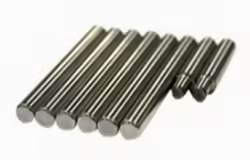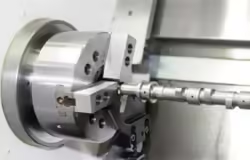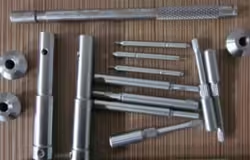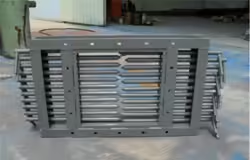
What You Need to Know About 1020 Steel Composition
Introduction
Steel is an essential material in various industries due to its durability, strength, and versatility. Among the many types of steel available, 1020 steel stands out for its specific properties and applications. This medium-low carbon steel is known for its excellent machinability and weldability, making it a popular choice in manufacturing, engineering, and construction. But what exactly makes 1020 steel unique? To understand its advantages, it is important to explore the 1020 steel composition.
This article delves deep into the chemical composition of 1020 steel, its properties, applications, and how its composition affects its performance in different contexts.
Understanding 1020 Steel Composition

The term “1020 steel” refers to a grade of carbon steel that contains 0.20% carbon as a key component. The low carbon content makes it more ductile and easier to form and machine, compared to higher carbon steels. In addition to carbon, 1020 steel composition also includes small amounts of other elements like manganese, phosphorus, and sulfur. These elements enhance the steel’s mechanical properties while maintaining good machinability.
Let’s break down the 1020 steel composition:
- Carbon (C): 0.18% – 0.23%
- Manganese (Mn): 0.30% – 0.60%
- Phosphorus (P): Maximum 0.04%
- Sulfur (S): Maximum 0.05%
This combination results in a well-balanced steel that is both strong and easy to work with.
Impact of Carbon Content
The carbon content in 1020 steel is relatively low compared to other steels, which directly impacts its hardness and tensile strength. Low carbon levels make the steel more ductile and easier to form, but it also limits its hardness, meaning 1020 steel may not be suitable for applications requiring extremely high strength or wear resistance. However, its moderate carbon content makes it versatile for a wide range of applications.
Key Properties of 1020 Steel
The composition of 1020 steel gives it certain mechanical properties that make it ideal for specific uses. Below is a table summarizing the mechanical properties of 1020 steel:
| Property | Value |
|---|---|
| Tensile Strength | 395 MPa |
| Yield Strength | 230 MPa |
| Modulus of Elasticity | 205 GPa |
| Elongation at Break | 15-25% |
| Brinell Hardness Number | 111 (Annealed Condition) |
| Machinability Rating | 65% |
These properties are influenced by the 1020 steel composition, particularly the low carbon and moderate manganese levels, which offer a balance between strength, ductility, and ease of machining.
Weldability of 1020 Steel
Thanks to its relatively low carbon content, 1020 steel offers excellent weldability. When welding steels with higher carbon content, the risk of cracking increases due to the steel becoming brittle. However, with 1020 steel, this risk is significantly reduced. The low carbon content allows for smooth and strong welds without the need for preheating or post-weld heat treatment in most cases.
This property is especially useful in industries where welding is common, such as automotive manufacturing, construction, and machinery repair.
Applications of 1020 Steel
Where is 1020 Steel Used?
The versatility of 1020 steel composition makes it suitable for a wide range of applications. Some of the most common uses include:
- Automotive parts: Due to its good machinability and moderate strength, 1020 steel is frequently used in the manufacture of automotive components such as gears, axles, and crankshafts.
- Machinery components: The strength and ductility of 1020 steel make it ideal for shafts, pins, rods, and other machinery parts that require precise machining and easy forming.
- Construction and structural components: 1020 steel is often used in the construction of low-stress building components like beams, columns, and supports, where high strength is not critical but good ductility is necessary.
- Tubing and piping: 1020 steel is commonly used to manufacture tubes and pipes, especially in situations where bending and forming are required.
These applications benefit from the balance of strength, ductility, and weldability that 1020 steel offers, largely thanks to its carefully controlled composition.
Heat Treatment and Hardening of 1020 Steel
Can 1020 Steel Be Heat Treated?
Yes, 1020 steel can undergo various heat treatment processes, although the results are more moderate compared to higher carbon steels. The most common heat treatment processes for 1020 steel include:
- Annealing: This process softens the steel and improves its ductility and machinability, making it easier to form.
- Normalizing: Normalizing helps refine the grain structure of the steel, which can improve its strength and toughness.
- Case Hardening: While 1020 steel cannot be hardened throughout like higher carbon steels, it can undergo case hardening, where only the surface is hardened by introducing carbon to the outer layers.
Effect of Heat Treatment on 1020 Steel Composition
While the core 1020 steel composition remains unchanged during heat treatment, processes like case hardening alter the surface properties. This can create a harder, wear-resistant outer layer while maintaining the toughness and flexibility of the core material.
These processes expand the use cases of 1020 steel, allowing it to be used in applications where surface hardness is important, such as in gears and other wear-prone components.
How 1020 Steel Composition Compares to Other Steels
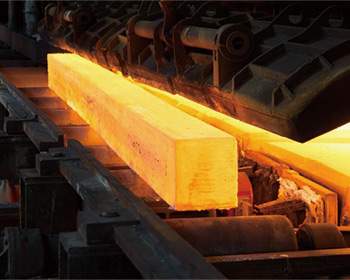
1020 Steel vs. 1045 Steel
While both 1020 and 1045 steel are carbon steels, their compositions differ significantly. 1045 steel has a higher carbon content (0.45%), making it stronger and harder than 1020 steel, but also less ductile and more difficult to weld. 1045 steel is often chosen for applications requiring more strength, such as in the manufacturing of axles and gears, whereas 1020 steel is preferred when ease of machining and welding are prioritized.
1020 Steel vs. Stainless Steel
Unlike 1020 steel, stainless steel contains a significant amount of chromium, which gives it corrosion-resistant properties. 1020 steel does not offer the same resistance to rust and corrosion, making stainless steel the better option in environments where exposure to moisture or chemicals is a concern. However, 1020 steel is typically more affordable and easier to machine than stainless steel, making it a cost-effective choice for many projects.
Conclusion
Knowing the 1020 steel composition is essential for selecting the right material for your projects. The balanced composition of carbon, manganese, and other elements provides a unique combination of machinability, strength, and ductility, making 1020 steel an excellent choice for a wide range of industrial applications. Whether you’re manufacturing automotive parts, machinery components, or structural materials, 1020 steel offers versatility and reliability.
When choosing steel for your projects, it’s important to consider how the chemical composition will affect performance, durability, and cost. With 1020 steel, you get a material that is easy to work with, affordable, and adaptable to many different processes, from welding to heat treatment.
FAQ
What is the main difference between 1020 steel and other carbon steels?
The key difference is in the carbon content. 1020 steel contains about 0.20% carbon, which gives it moderate strength and excellent machinability. Higher carbon steels, like 1045, have more carbon and are stronger but harder to machine.
Can 1020 steel be hardened?
Yes, 1020 steel can be case hardened, meaning only the surface becomes harder while the core remains ductile. This is useful in applications where surface wear resistance is important.
Is 1020 steel easy to weld?
Yes, 1020 steel is known for its excellent weldability due to its low carbon content. It can be welded without the risk of cracking that higher carbon steels may present.
What industries commonly use 1020 steel?
1020 steel is widely used in the automotive industry, construction, machinery manufacturing, and in the production of tubes and pipes due to its versatility and ease of machining.
What are the key elements in 1020 steel composition?
The main elements in 1020 steel composition include carbon (0.20%), manganese (0.30%-0.60%), along with trace amounts of phosphorus and sulfur. These elements give the steel its specific properties like strength, ductility, and machinability.

